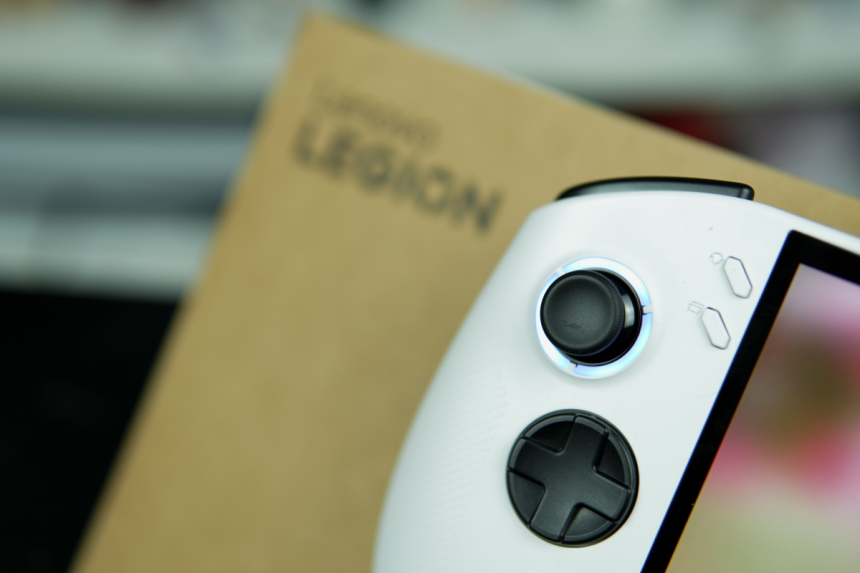Lenovo has officially confirmed that its latest handheld gaming device, the Legion Go 2, will be compatible with Microsoft’s new Xbox full-screen experience (FSE). The announcement marks a milestone for Lenovo, as it becomes the first handheld manufacturer outside of Asus to secure access to the Xbox FSE. However, the rollout will not be immediate. Buyers of the Legion Go 2 will need to wait until the spring of 2026 before the feature becomes available, months after the device’s scheduled launch next month. The news underscores Microsoft’s gradual approach in expanding FSE availability, as it works to refine the interface and optimize performance across multiple hardware platforms.
Asus Takes the Lead
Asus remains first in line for the Xbox FSE rollout. On October 16, 2025, Microsoft will co-launch the Xbox Ally and the Xbox Ally X alongside Asus, with both handhelds shipping with the full-screen experience pre-installed. Microsoft has also confirmed that its “next focus” will be updating existing Asus handhelds, including the original ROG Ally and the upgraded Ally X models. This staggered release strategy highlights the close collaboration between Microsoft and Asus in shaping the early adoption of the FSE interface. By the time Lenovo receives access in 2026, Asus devices will already have benefited from months of user feedback and software refinements.
What is Xbox Full-Screen Experience?
The Xbox FSE is Microsoft’s latest attempt to streamline the gaming experience on handheld PCs and gaming-focused laptops. Designed as a console-like dashboard, the FSE offers a cleaner interface, easier navigation with a gamepad, and better integration with the Xbox ecosystem. Early demonstrations suggest that the FSE can improve system performance by saving memory resources and enabling more seamless transitions between sleep and wake cycles. This matters significantly for handhelds, where battery efficiency and quick usability are essential. For many gamers, the addition of FSE could make Windows-based handhelds feel less like downsized PCs and more like true portable consoles.
Performance Expectations and Comparisons
One of the key hopes tied to the Xbox FSE is its potential to deliver a lighter, more optimized version of Windows for handheld devices. Gamers and analysts alike have compared this possibility to the performance benefits achieved when running SteamOS on identical hardware. SteamOS, Valve’s Linux-based system, has shown that streamlined software environments can dramatically improve power efficiency and gameplay smoothness. If Microsoft’s FSE succeeds in replicating even part of this performance boost, it could strengthen the appeal of handheld gaming PCs at a time when the market is becoming increasingly competitive.
The Legion Go 2, priced at $1,099, will launch as Lenovo’s flagship handheld. With its confirmed FSE support, it will compete directly with Asus’s Ally lineup and Valve’s Steam Deck. While SteamOS remains popular among enthusiasts who prefer open-source customization, Microsoft’s focus on integrating Xbox Game Pass, cloud gaming, and Windows compatibility could tilt momentum toward Windows handhelds, especially once FSE becomes widely available.
Industry Significance
The integration of FSE into handhelds also signals Microsoft’s growing commitment to portable gaming. By treating handheld PCs as part of the Xbox ecosystem, Microsoft is addressing a rapidly expanding segment of the market that blends PC versatility with console convenience. The collaboration with Asus and now Lenovo suggests that other manufacturers may soon follow. For Lenovo, being the first non-Asus partner reinforces its ambition to carve out a larger share of the handheld gaming sector, especially in regions where portable devices are increasingly preferred over traditional consoles.
Outlook
While Lenovo users will need patience before accessing the Xbox full-screen experience, the announcement solidifies the Legion Go 2 as a future-proof device. The inclusion of FSE will not only enhance usability but also embed Lenovo more firmly into the evolving Xbox-PC ecosystem. By spring 2026, Legion Go 2 owners could find themselves enjoying a more intuitive, console-like interface that maximizes performance while ensuring compatibility with Microsoft’s growing range of services. For the handheld gaming industry as a whole, the arrival of Xbox FSE marks another step in the blurring lines between consoles and portable PCs.






